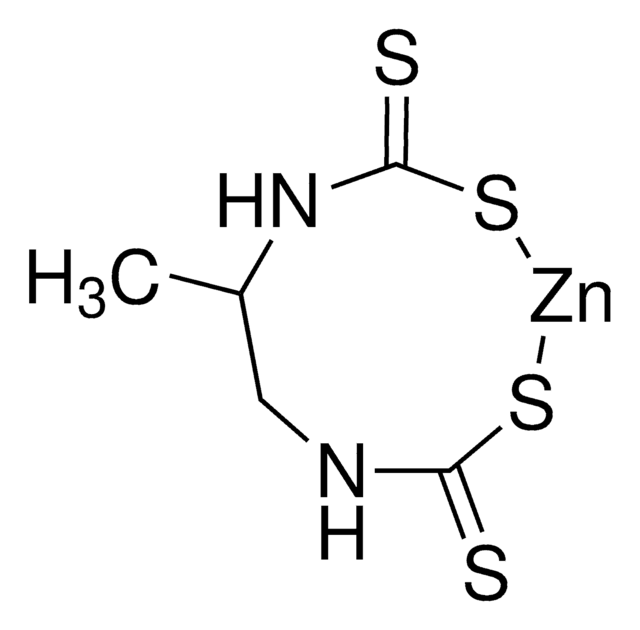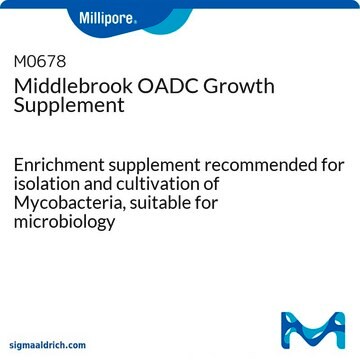49767
Glycerol
BioUltra, for molecular biology, anhydrous, ≥99.5% (GC)
Synonym(s):
1,2,3-Propanetriol, Glycerin
About This Item
Recommended Products
grade
for molecular biology
Quality Level
vapor density
3.1 (vs air)
vapor pressure
<1 mmHg ( 20 °C)
product line
BioUltra
Assay
≥99.5% (GC)
form
viscous liquid
autoignition temp.
698 °F
impurities
DNases, none detected
RNases, none detected
insoluble matter, passes filter test
phosphatases, none detected
proteases, none detected
ign. residue
≤0.1%
refractive index
n20/D 1.474 (lit.)
n20/D 1.474
pH
5.5-8 (25 °C, 5 M in H2O)
bp
182 °C/20 mmHg (lit.)
mp
20 °C (lit.)
solubility
H2O: 5 M at 20 °C, clear, colorless
density
1.25 g/mL (lit.)
anion traces
chloride (Cl-): ≤1 mg/kg
sulfate (SO42-): ≤10 mg/kg
cation traces
Ag: ≤5 mg/kg
Al: ≤1 mg/kg
As: ≤0.1 mg/kg
Ba: ≤1 mg/kg
Bi: ≤1 mg/kg
Ca: ≤5 mg/kg
Cd: ≤1 mg/kg
Co: ≤1 mg/kg
Cr: ≤1 mg/kg
Cu: ≤1 mg/kg
Fe: ≤1 mg/kg
K: ≤20 mg/kg
Li: ≤1 mg/kg
Mg: ≤1 mg/kg
Mn: ≤1 mg/kg
Mo: ≤1 mg/kg
NH4+: ≤5 mg/kg
Na: ≤20 mg/kg
Ni: ≤1 mg/kg
Pb: ≤1 mg/kg
Sr: ≤1 mg/kg
Tl: ≤5 mg/kg
Zn: ≤1 mg/kg
SMILES string
OCC(O)CO
λ
5 M in H2O
UV absorption
λ: 260 nm Amax: 0.05
λ: 280 nm Amax: 0.07
InChI
1S/C3H8O3/c4-1-3(6)2-5/h3-6H,1-2H2
InChI key
PEDCQBHIVMGVHV-UHFFFAOYSA-N
Looking for similar products? Visit Product Comparison Guide
General description
Application
Biochem/physiol Actions
- a supplement during cell culture of Mycobacterium tuberculosis and Mycobacterium avium.
- a fuel during designing enzymatic biofuel cell.
- a liquid composite matrix with 4-HCCA and 3-aminoquinoline for analysis of neutral and acidic glycans.
- a matrix for fast atom bombardment MS.
- may be employed as liquid matrix for the quantification studies by MALDI (Matrix-assisted laser desorption/ionization mass spectrometry) analysis.
Other Notes
Storage Class Code
10 - Combustible liquids
WGK
WGK 1
Flash Point(F)
390.2 °F - Pensky-Martens closed cup
Flash Point(C)
199 °C - Pensky-Martens closed cup
Personal Protective Equipment
Certificates of Analysis (COA)
Search for Certificates of Analysis (COA) by entering the products Lot/Batch Number. Lot and Batch Numbers can be found on a product’s label following the words ‘Lot’ or ‘Batch’.
Already Own This Product?
Find documentation for the products that you have recently purchased in the Document Library.
Customers Also Viewed
Our team of scientists has experience in all areas of research including Life Science, Material Science, Chemical Synthesis, Chromatography, Analytical and many others.
Contact Technical Service








